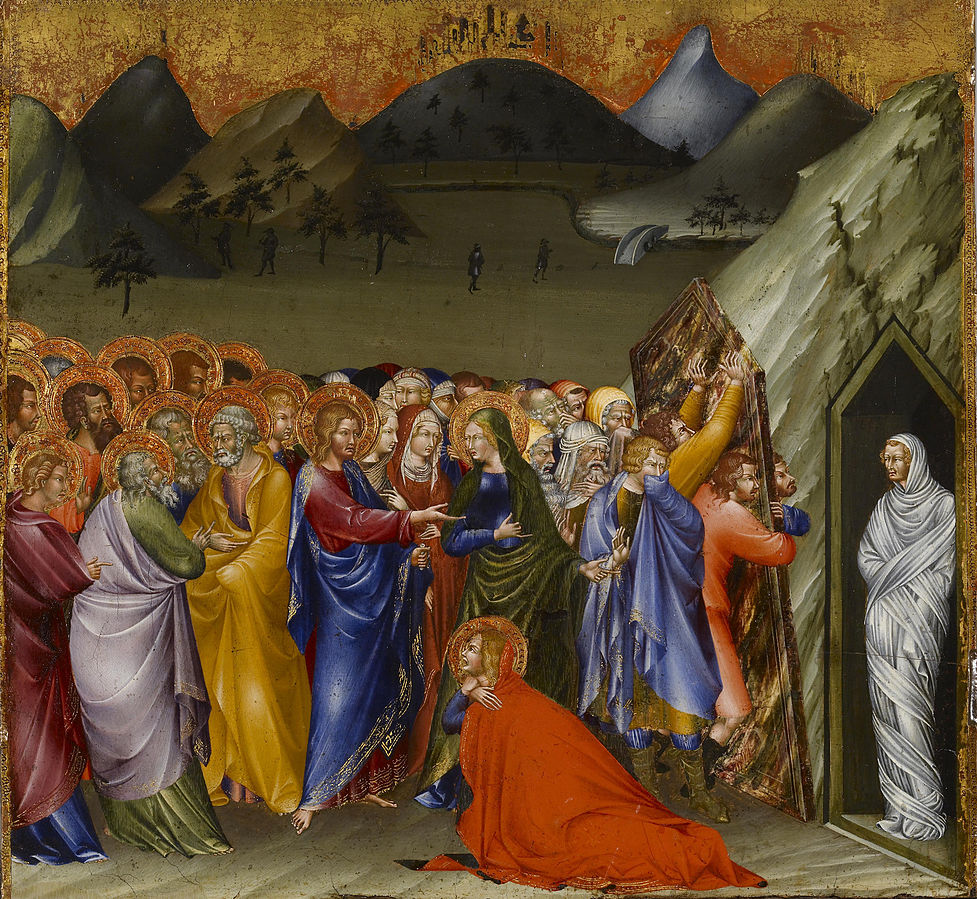
In the US people traditionally have 3 names: a “first name,” which is typically the one we go by; a “middle name,” which might be the one we go by if the first name might be confusing (e.g., for a “Junior”); and a “last name,” which is the family name. So to American Christians, “Lord Jesus Christ” looks like it fits the pattern—but it doesn’t. “Lord” is of course a title, not a name; “Jesus” (actually “Joshua”) is the personal name; and “Christ” is another title, from the Greek word for “Messiah,” or “Anointed One.”
These two titles were central doctrines in the early expansion of Christianity. “Jesus is Lord” was a core confession (Ro 10.9; Php 2.11), probably in contrast to the phrase central to emperor worship in the first-century Roman Empire (“Caesar is Lord!”). “Jesus is the Christ” was a central theme in the early apostolic preaching (Ac 2.36; 9.22; 17.3; 18.5, 28), which was probably based on Christ’s exposition of the Hebrew Scriptures to the two disciples on the road to Emmaus (Lk 24.27).
It’s no surprise, then, when John tells us that he writes his Gospel “that you [readers] might believe that Jesus is the Christ” (Jn 20.31). And how does he do that? He writes, “These are written that you might believe …” (Jn 20.31).
“These” what? We find the antecedent of the demonstrative pronoun these, as we might expect, in the previous verse: “Many other signs Jesus also performed in the presence of the disciples, which are not written in this book” (Jn 20.30)—“but these [signs] are written that you might believe.”
John tells us here at the end of his book that he has structured his Gospel around a series of signs that demonstrate that Jesus is Messiah.
What are the signs? Well, John makes it simple enough to find them; you just look through the Gospel for the Greek word translated “signs” (semeion) and see what John is referring to in each use.
Here they are—
- Changing water to wine at the wedding in Cana (Jn 2.11). Some commentators note that John may not be saying that this was Jesus’ first miracle ever, but that this is John’s “roman numeral one,” the first sign he’s chosen to demonstrate Jesus’ Messiahship.
- Healing the nobleman’s son (Jn 4.54)
- Feeding the 5000 (Jn 6.14)
- Healing the man born blind (Jn 9.16)
- Raising Lazarus (Jn 12.18)
- When the Jews ask him for a “sign,” Jesus points obliquely to his own resurrection (Jn 2.18-19).
That’s six miracles that John specifically identifies as “signs.” It’s been common among interpreters to include one more, to make the number seven. Some include the healing of the paralytic at the Pool of Bethesda (Jn 5.9), while others include the walking on the water (Jn 6.19). Yet others include both and pass over Jesus’ own resurrection, which, as I’ve noted above, is listed only obliquely.
Think about the significance of these specific miracles. In changing water to wine, Jesus demonstrates lordship over the quality of matter; in feeding the 5000, he demonstrates lordship over its quantity. If he made fermented wine—and I’m inclined to think that he did—he demonstrates lordship over time; in healing the nobleman’s son, he demonstrates lordship over space. (In the first two miracles, then, he’s Lord of time, space, and matter—the entire cosmos.) In healing the paralytic on the Sabbath, and the man born blind on another Sabbath, he demonstrates lordship over divine law; in walking on the water, he demonstrates lordship over physical law. In healing congenital blindness, he acts essentially as Creator, providing functioning eyes where there never had been any. In raising Lazarus from the dead—four days after he died—he demonstrates lordship over our greatest enemy, death. And he exponentiates that in his final sign; it’s quite an accomplishment to raise somebody else from the dead, but raising yourself from the dead (Jn 10.18) is on a different level entirely.
More than once John notes the effect that these signs had on those who saw them. Early on, people believed in him on account of the signs (Jn 2.23; 7.31; 9.16); and even Nicodemus, a member of the Sanhedrin, found them compelling (Jn 3.2), as did others on the Sanhedrin as well (Jn 11.47).
What’s the only reasonable conclusion from these well-attested signs?
Jesus is the Christ, anointed by God as prophet, priest, and king—authorized to speak to us for God, to speak to God for us, and to rule forever on the throne of his father David (2S 7.12-14).
This is the one at whose name every knee shall bow (Php 2.10). I am happily compelled to begin now.
Part 2: Responding to the Evidence
Artwork: The Resurrection of Lazarus by Giovanni di Paolo (1403-1482), from the Walters Art Museum

Leave a reply. Keep it clean.